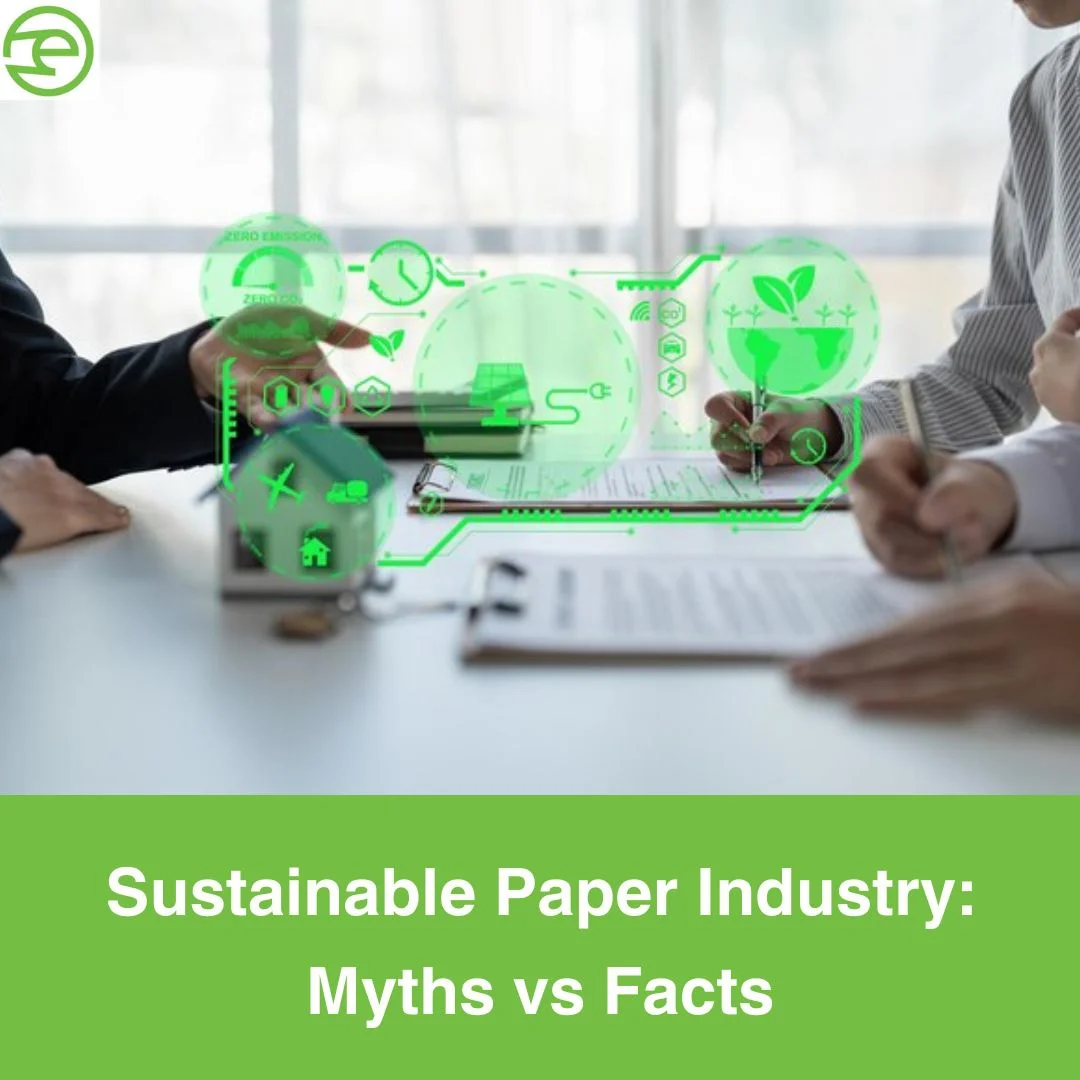Sustainable Paper Industry: Myths vs Facts
Introduction
Let’s get straight to heart of all the misconceptions surrounding the paper manufacturing, the journey begins with unraveling the intricacies of a more sustainable business. Contrary to prevailing notions casting shadows on this industry, a surprising environmental saga awaits exploration. Nestled in these pages is a revelation: it takes nearly seventy percent lesser power to reutilize waste in this industry than crafting it through fresh resources, shattering preconceived notions.
Amidst a ceaseless echo of “going green” and “saving trees” emerges a profound truth—papers stands as the beacon of green imperishable. The enigma lies between clash of advisory messages and a concealed truth behind the green curtain. As the narrative unfolds, myths will crumble, giving way to a resilient fact woven into a fabric of a more responsible and eco-friendly industry.
Explore Best Paper Mill Manufacturer
1: Root Cause of Desertification
Digging into the Roots
The narrative unfolds in the Indian market in which the production of papers, contrary to popular belief, is deeply intertwined with agricultural foundations. It's not just about manufacturing; it's a collaborative effort inclusive of the agrobusiness. Each year witnesses a harmonious expansion, claiming approximately 3,08,881 Acres—but here's the twist: these are predominantly tainted bordering domains.
Debunking the Myth: Sustainable Growth
Intriguingly, more than 3/4th of the industry's insatiable appetite for raw materials is satiated through forests. Picture this: a justifiable collaboration between business and nature, where growth supersedes harvesting. The myth that papers are actually the reason for axing down forests crumbles. The roots run deep, but they nurture, not deplete.
2: Paper Industry Consumes Large Amounts of Wood & Disturbs the Ecological Balance
In the intricate dance of myths and truths surrounding the paper industry, Myth 2 twirls like a specter, claiming the industry devours vast woodlands, disrupting nature's delicate equilibrium. However, the reality, unraveling beneath this shadow, is a tapestry of sustainable practices and ecological stewardship.
Unveiling the Truth
The paper industry, often misunderstood, stands as a beacon of 'wood positivity.' It not only harvests but sows, surpassing mere ecological maintenance. This agro-forestry symphony, conducted with finesse, harmonizes growth and harvest, leaving a minimal footprint.
Countering Misconceptions
A mere 3% player in the grand orchestra of natural raw resources consumption, the industry orchestrate their moves with environmental finesse. The environmental stage remains undisturbed, the equilibrium unbroken, as paper crafts its narrative from responsible, sustainable sourcing.
In this eco-conscious ballet, Myth 2 dissipates like morning mist, revealing a business model adept to nature's rhythm.
3: It Is Not An Eco-Friendly Industry
Materials for manufacturing are diverse, ranging from timber to waste pulp and agricultural materials. Contrary to common misconceptions, the sustainability of the paper industry lies within the regenerative potential. This misconception of unsustainability unravels when delving into the concentrated levels of recycling, a commendable business practice.
In essence, they transform what is mere wastage into valuable resources, aligning itself with a cycle of regeneration. The biodegradability and recyclability further bolster its eco-friendly profile, challenging the notion altogether.
While the industry's sources might seem traditional, their regenerative capacity and adaptability to recycling processes paint a more nuanced picture. It's not merely about paper; it's about transforming what others might discard into a cycle of sustainability—a reality often overshadowed by persistent myths.
4: Paper Industry is not Water and Energy-Efficient
In the ever-evolving landscape of the paper industry, the myth that it's a water and energy glutton stands in stark contrast to the unfolding realities.
The reality is a testament to progress. Over the years, integrated paper mills in India have undergone a remarkable metamorphosis, shedding inefficiencies like a snake sheds its skin. Black liquor, once a byproduct, now plays a crucial role, powering these mills with over 60% of their energy needs. The pulsating heart of innovation beats louder as water consumption per tonne of paper drops from 200 cubic meters to a mere 50, with an unyielding pursuit for 40.
Debunking the myth isn’t just about correcting misinformation; it's a revelation of the segment's commitment to environmental stewardship, a silent revolution in efficiency echoing across the cellulose-laden corridors of this industry.
5: The Demand Is Weakening
The demand of papers and related product is far from fading, stands resilient. Contrary to the murmurings of decline, the global manufacture of papers in 2016 was a staggering 415 Mt, a testament to its enduring relevance in our digitally dominated age.
In the vast Indian landscape, the market and scope for paperboards is poised and surged to a remarkable 50% in 2020. It's not just about paper; it's about the enduring narrative of an industry that refuses to bow to the whispers of decline.
The Environmental Spectrum
Amidst the tapestry of misconceptions, the ‘sustainable’ spectrum of this business unveils a nuanced reality. Globally the paper, pulp, and print sector play a remarkably restrained note, contributing a mere 1% of worldwide greenhouse gas discharges according to Ecofys.
Carbon Footprint:
This sector stands as a beacon of minimalism, with emissions akin to a whisper in the manufacturing clamor. The paper's carbon concentration is surprisingly small, a silent ally against global warming.
Recycling Realities:
While myths may cast shadows, the truth illuminates the reusing landscape. Paperboard and related products emerge as a phoenix, rising from its ashes as one of the most reprocessed and used items, weaving a narrative of sustainability that transcends the ephemeral claims of unsustainability.
Conclusion
In the wide landscape of eco-friendly practices, the paper industry emerges contrary to a myth-burdened villain but as a silent eco-warrior. It weaves its story through agro-forestry, recycling endeavors, and energy-efficient metamorphosis. Each paper, a whispered promise of renewal.
Let the ink flow on responsibly sourced pages, for in each print, a rebuttal to myths, and in each tree planted, a declaration of paper's enduring environmental tale. The blog only brushes the surface; the paper's verdant story awaits exploration, inked with facts against the myths.






